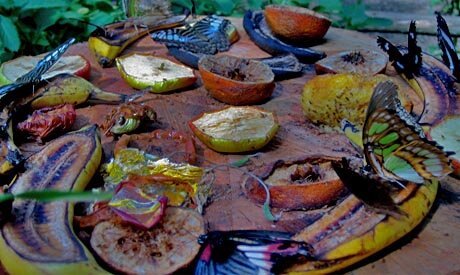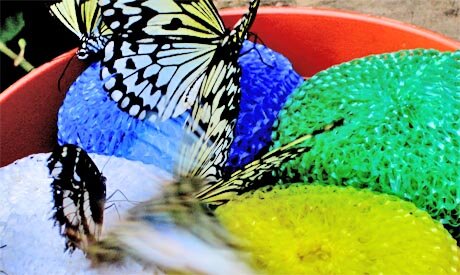Still Lives
Biological phenomena and the biochemical basis of genetic expression within the nucleus are traced with colour. Fluorescently labelled DNA sequence specific probes can be used to selectively stain and paint individual molecules and to make a tracing of the interphase that occurs within cell nucleus during division. Fluorescent micrographs can show where chromosome territories come into contact and show the intimate contact during their intermingling. Bioluminescence occurs in nature and using genetic transfer, colour and luminosity can be integrated into new life forms. In effect, the biochemical pigment secretions in animals, vegetable and minerals can be applied like a molecular watercolour palette.
There is a kind of potato that is pollinated by a single species of butterfly, which feeds itself exclusively on that potato. The butterfly may be said to be the potato's sexual apparatus, and the potato the butterfly's digestive system, the two forms a single organism. In this particular symbiosis, the butterfly's wing is exactly the same blue as the potato flower. The wing colour results from the reflection of sunlight by minuscule mirrors, that of flower from the transformation of chlorophyll, but nevertheless they match the consequence of a complex evolutional chain of feedback and adjustments. The Disney of the future should be able to program such effects at will.
Vilem Flusser
Curie's children
Artforum 1988



 email this article
email this article print-friendly version
print-friendly version